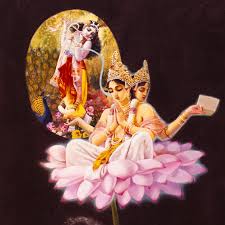El Coraje para Enseñar
De Enseñanza y Maestros
Por Michael Dolan/ B.V. Mahayogi
traducido por Teresa Loret de Mola, (Tapanandini DD)
Continuando con las ideas
expresadas en el último mensaje, hay una paradoja interesante en el acto de
enseñar.
Cualquier enseñanza implica ego. Ya
que el maestro adopta la posición de saber algo. ¿Y qué si el enseñar es acerca
de deshacernos del ego? ¿Cómo enseñar el arte de renunciar al ego?
Tan pronto como alguien dice, “Yo
sé cómo enseñar”, y acepta el negocio de ser un guru, está consintiendo una
especie de ego, el que en sánscrito es llamado acharya-abhiman. Pero esto es
inevitable.
 |
| Ego es inevitable en el acto de enseñar |
Enseñar es un acto de compasión, o
ha de serlo. Enseñar nunca ha de ser acerca de gratificar el ego. Adoptar la
pose de “maestro” significa aceptar la relación maestro-estudiante. As´´i que
el maestro debe dejar caer el manto de “místico” y usar el “sombrero de
maestro”, al menos el tiempo que está “en clase”. Por supuesto, un verdadero
acharya siempre está “en clase”, ya que se espera de él que enseñe con su
ejemplo. La palabra acharya significa, “Uno que enseña con el ejemplo”. También
puede enseñar por preceptos, pero su ejemplo se espera que iguale o incluso que
exceda su precepto. Esto carga de una tensión espiritual sobre el maestro
espiritual, ya que es forzado a llevar “el sombrero de maestro” 24 horas al
día.
Un maestro de escuela ordinario
puede ir a casa al final del día y ser un músico o trabajar en escribir su
novela. Tal vez puede tener una vida social con amigos o perseguir una vida
romántica fuera de la escuela.
Pero de un maestro espiritual se
espera que viva el ejemplo 24 horas al día, enseñanza constante. No podrá
deshacerse del “sombrero de maestro” y tomar el manto de místico,
puesto que esto no podrá ser entendido por sus estudiantes. Gaura Kishore Das
Babaji Maharaja rehusó a los estudiantes por esta misma razón. No estaba
interesado en el ego de enseñar. Pero si no hay místicos acepten el
papel de maestros estaremos privados de orientación.
La profunda compasión dicta que un
alma realizada alcance a los empobrecidos para darles una mano, incluso a
riesgo de hacerse famoso y adquirir una gran gratificación del ego. Así que el
acharya enfrenta la difícil tarea de superar el acharya-abhiman incluso cuando
acepta el papel de maestro.
Los discípulos o estudiantes, al
mismo tiempo, demandan autenticidad. Ellos quieren un místico genuino como
guru. Desgraciadamente, por las razones señaladas arriba, los místicos
prefieren no enseñar. Algunos estudiantes están completamente determinados a
encontrar al místico más retirado y convertirlo en maestro. De este modo,
pueden clamar que un guru “Uttama-adhikari” o guru con la “calificación
última”, un “genio confirmado”, es su maestro. El desear clamar
como maestro propio al guru con la calificación más elevada, es, por
supuesto, otro viaje del ego.
En un sentido, no importa si un
genio confirmado del más elevado orden me dice que no me coma las crayolas
azules, o si éste es meramente un maestro de kínder. El genio no transmite ningún
virtuosismo al demostrar al alumno de violín cómo tocar una escala.
Beethoven era notoriamente un mal
maestro de piano, pues carecía de la paciencia básica para lidiar con las
torpezas con las teclas de un principiante. El genio loco, en sus últimos días,
les gritaría a sus estudiantes y los humillaría. Alguien menos virtuoso puede
tal vez carecer del genio de Beethoven, y sin embargo tener la paciencia de
trabajar con los niños.
Entonces, en un sentido, no importa
si la persona que me conduce en el inicio viene desde la plataforma espiritual
más elevada. Puede tal vez ser un maestro adecuado para enseñar que aprendió de
un maestro elevado. Lo importante es que se me muestre la senda. No
tenemos que insistir en que el localizador de una ruta sea un cartógrafo
famoso. Podremos hacer muchos progresos con un maestro humilde.
La humildad del maestro, sin
embargo, no disminuye el respeto que le debemos. El respeto por el maestro es
importante para el estudiante, si valora al maestro, valorará la educación. Así
es que hacemos todo lo posible para respetar a aquellos quienes tienen la
compasión y el coraje de enseñar.
x











